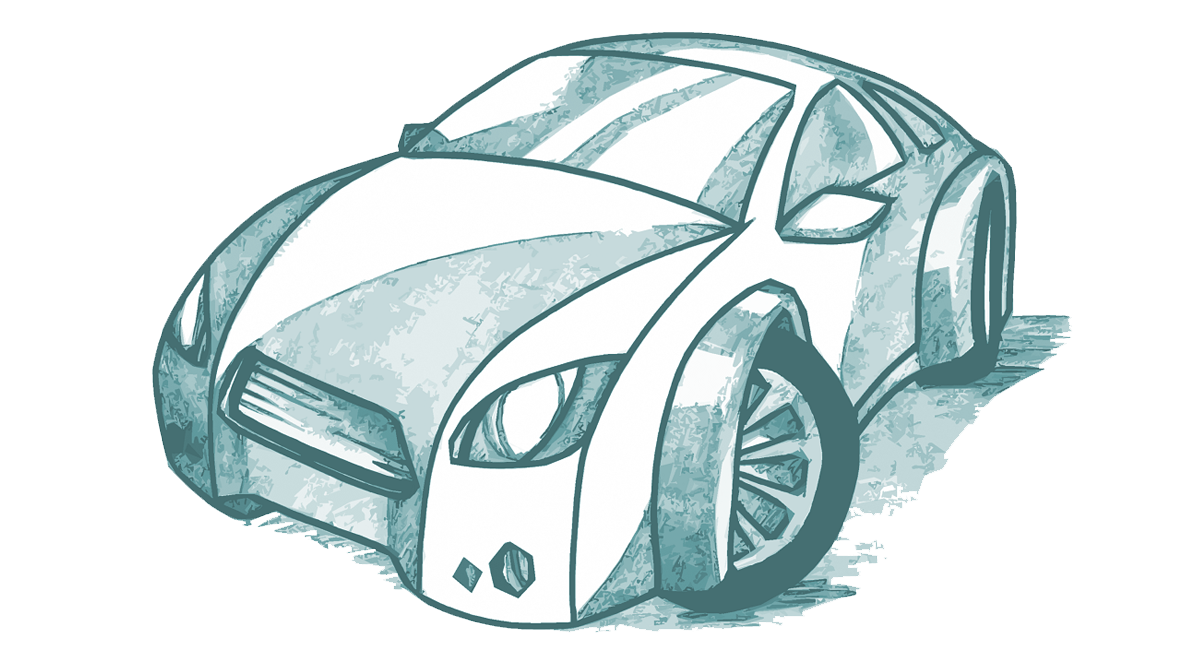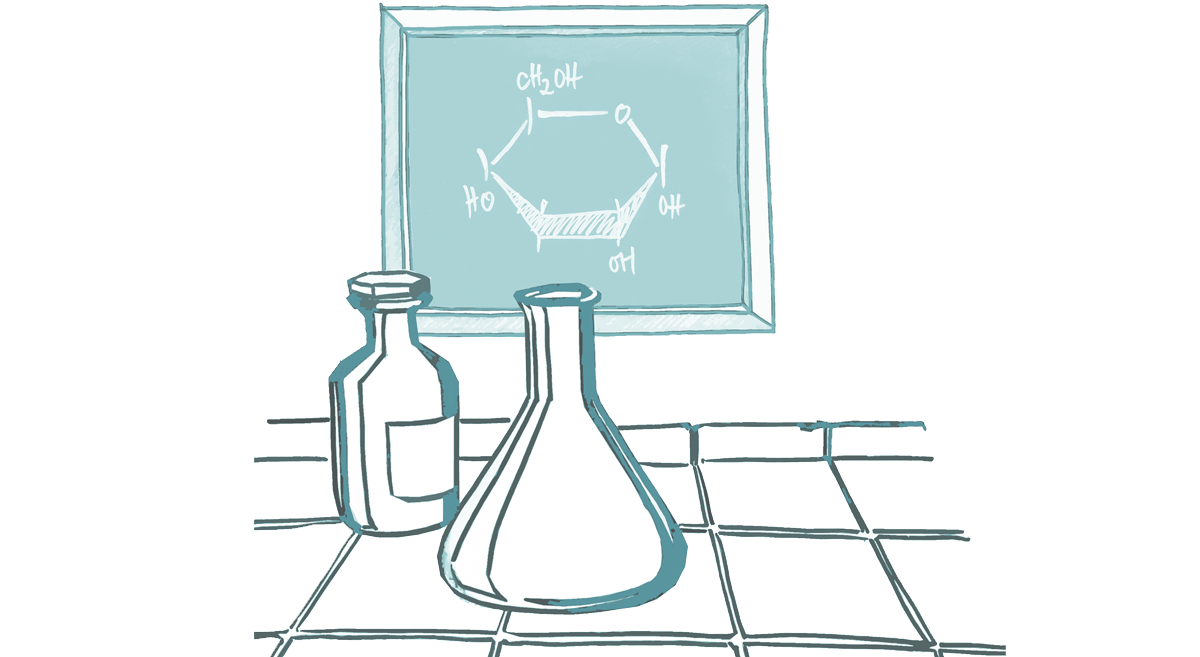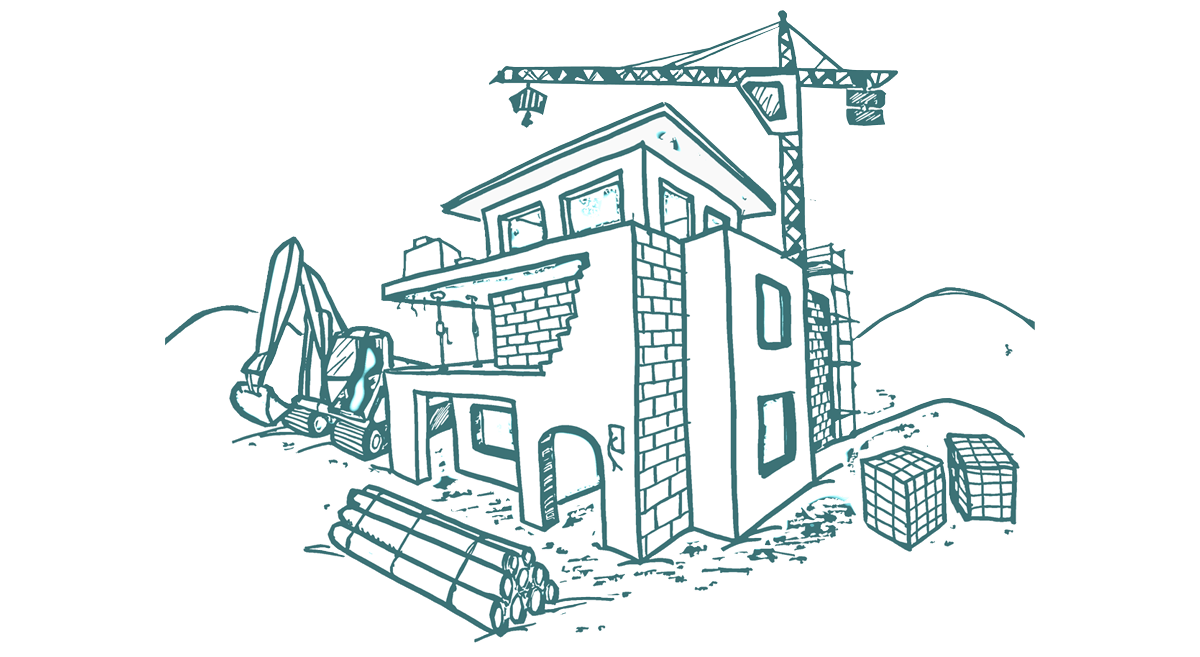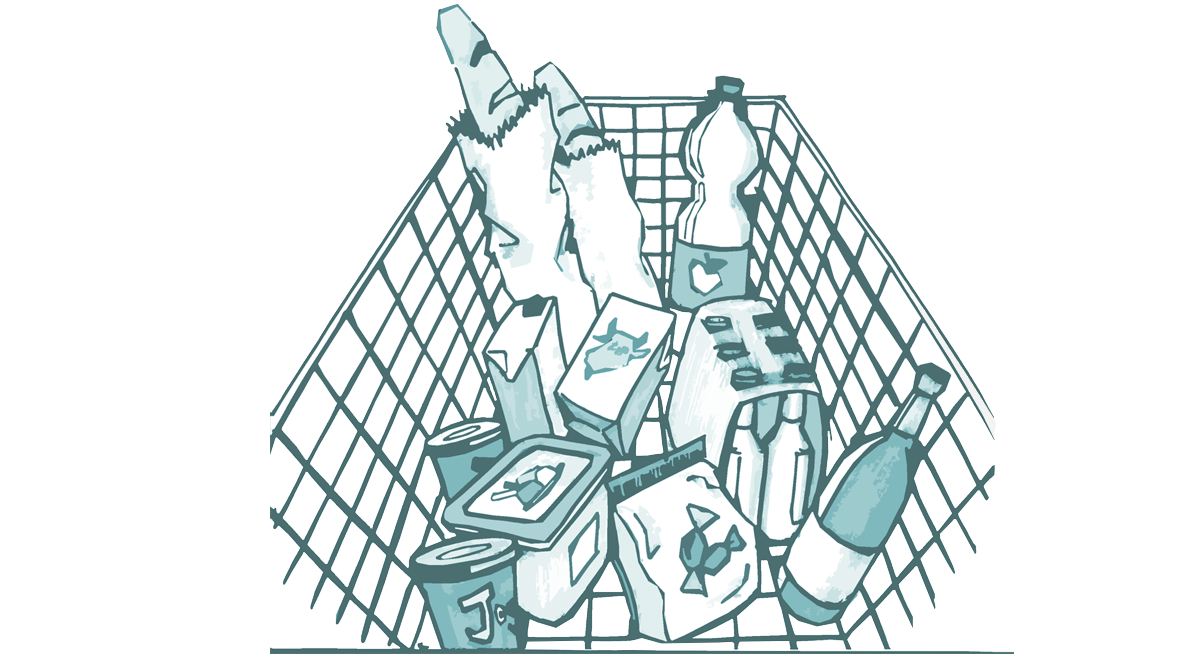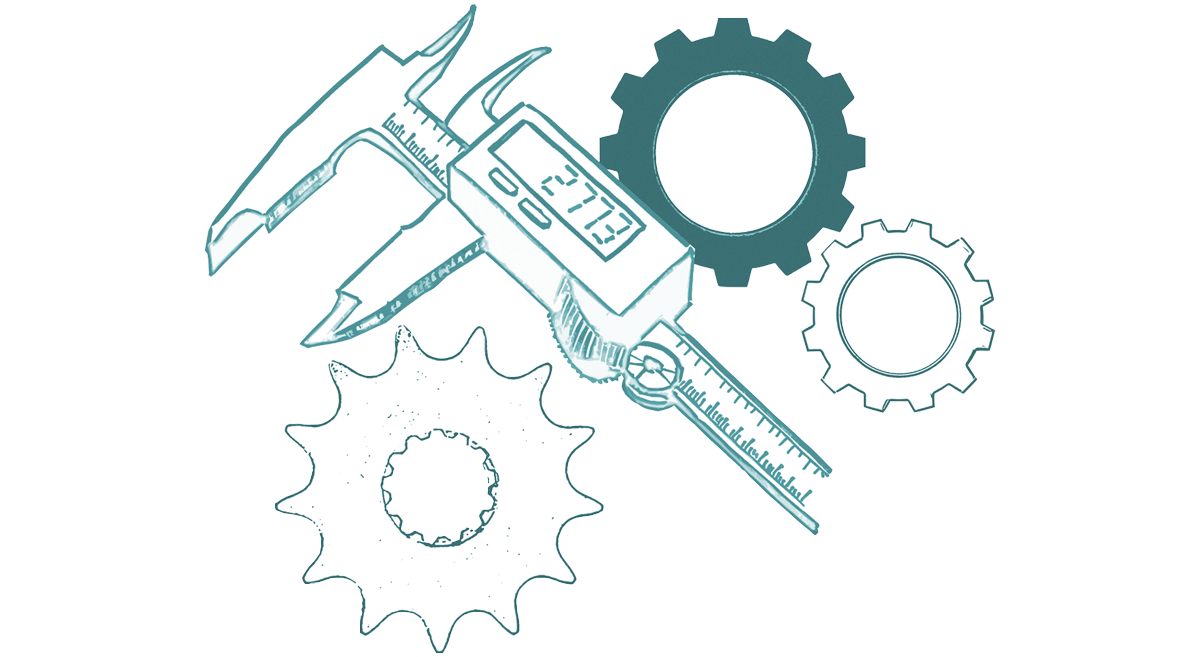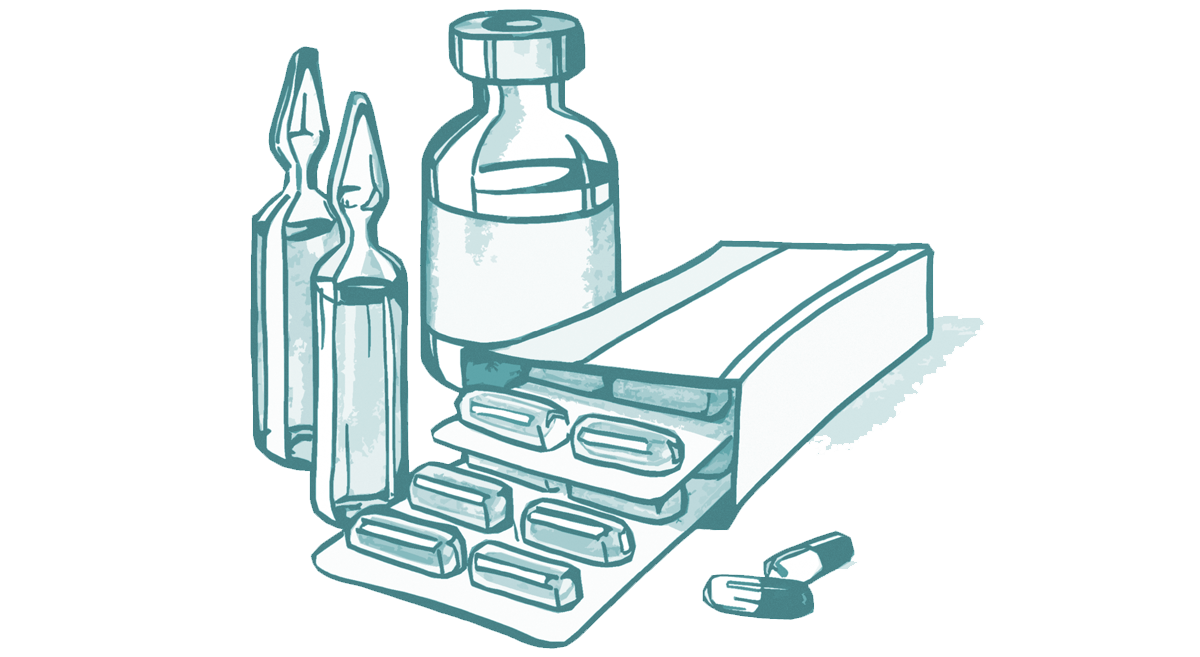Agriculture and forestry
Agriculture and forestry are important pillars of the bioeconomy. Plant biomass produced in meadows, fields and forests is one of the foundations of the bio-based economy. Modern cultivation technologies enable a more sustainable and resource-efficient production.
Examples for bioeconomy:
Bio-based raw materials, aquaculture,
agricultural timber, plant and animal breeding
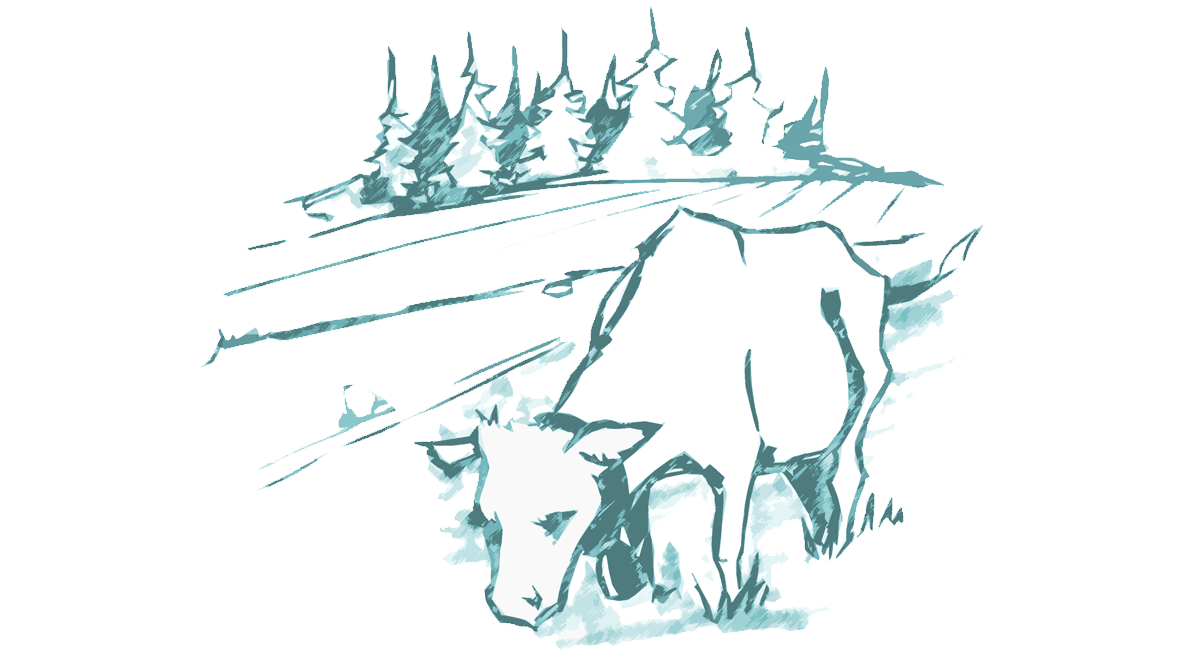
Agriculture and forestry are important industries. According to the BMEL, in 2020, Germany counted almost 263,000 agricultural enterprises and around 29,000 forestry enterprises. Agriculture and forestry are responsible for a large part of the value created in rural areas. Farmers and foresters manage and maintain more than three quarters of the land. Apart from their primary task of growing food and feed, they also produce bio-based raw materials for industry and biomass for the generation of renewable energy. These raw materials include wood, industrial and energy crops such as rapeseed, corn and miscanthus, as well as by-products such as liquid manure and straw. In digestors, agricultural biomass is converted into precursors for bio-based plastics and other sustainable chemicals (see chapter Chemical industry). In biogas plants or combined heat and power plants, this is converted into heat, electricity or fuel (see chapter Energy). Wood from forestry is a significant and versatile resource for the bioeconomy: It can be processed into sawn timber or plywood, wood-based materials or wood-plastic composites, pulp products such as paper or cardboard, pellets or briquettes and many other innovative products. The Forestry & Wood Cluster (excluding the publishing and printing industries) generates a turnover of approximately 131 billion euros through 98,524 companies with 732,140 employees.
Around half of Germany’s land is used for agriculture. According to the BMEL, out of the 16.6 million hectares of agricultural land, 70% is arable. A further 29% is used as grassland and only 1% for permanent crops such as fruit or wine. More than half of the agricultural land in Germany is used for growing animal feed, and about a quarter of the land is used to grow plant crops for direct human consumption. The remaining area is used for the production of renewable resources for energy and industrial use.
Arable production systems are the cornerstone of food production. In the face of a growing global population and limited availability of arable land, climate change and the need to preserve biodiversity in natural habitats, arable farming must become more resource-efficient and sustainable. The 2035 Arable Farming Strategy identifies key fields of action for arable farming and for the contribution of the agricultural industry to protecting the environment, the climate and resources.
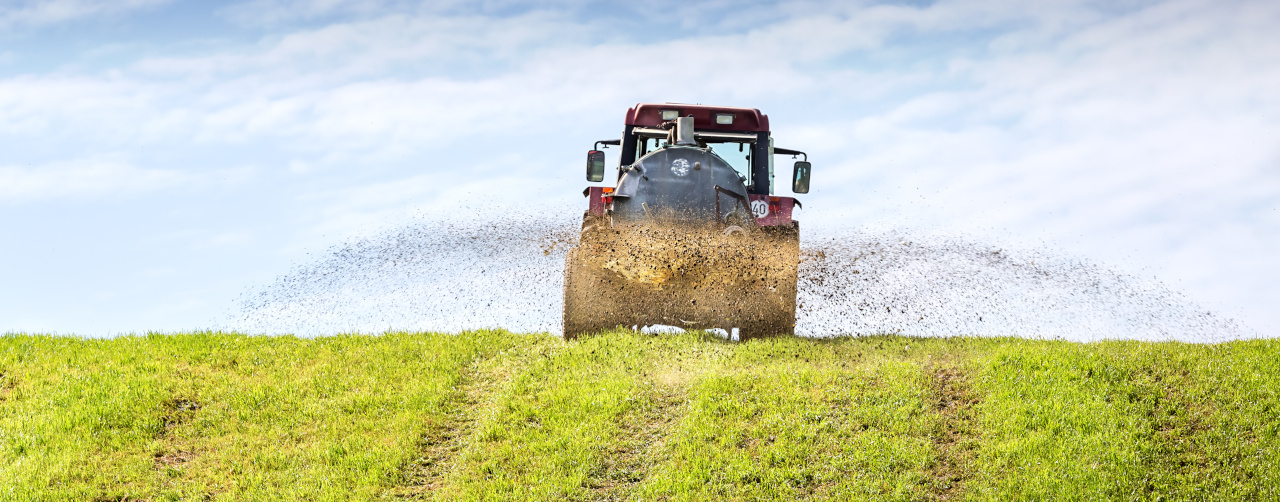
Bioeconomy research for agriculture pursues several goals: firstly, to reduce the required surface area and to boost the yield of crop plants by efforts such as modern plant breeding. Secondly, to reduce greenhouse gas emissions and other environmental impacts in agricultural production. One possible solution is to adapt farm management precisely to the location. Resources such as soil, water and nutrients must be used as efficiently and sustainably as possible. At the same time, species decline in the agricultural landscape must be halted and biodiversity must be strengthened by promoting ecosystem and structural diversity.
Modern plant breeding does not just have the single goal of increasing yields. It is also a matter of expanding the diversity of varieties and increasing the range of interesting plant ingredients. There is a strong demand for new varieties that are better able to cope with climate change, i.e. that are resistant to drought, excess salt or pest infestation, for example. Modern, knowledge-based plant breeding combines the latest findings from genetics and molecular biology with modern agricultural technology and sustainable soil management. New molecular biological breeding techniques are now complementing established breeding techniques. These include genome editing (such as CRISPR-Cas), which can be used to change the genetic material of crops in a targeted manner. Using other innovative breeding methods such as precision breeding based on genetic markers (smart breeding) or cell culture techniques, breeders can obtain high-yielding crop varieties that are more resistant to pests, diseases or weather extremes, and they can do so much faster and in a more targeted manner than ever.
Genome research provides a central knowledge base for modern plant breeding. German research teams are among the world leaders in this field. They carry out research into barley, the second most important grain crop in Germany. Despite its size and complexity, the barley genome has now been completely deciphered. An international consortium led by scientists from Gatersleben published the barley reference genome in 2017. This was the first complete
and highly resolved genetic sequence. The experts identified around 5 billion base pairs and put them in the right order. Today, researchers are analysing the barley pangenome, i.e. the entirety of the genomes of the many different variants from around the world. This creates a valuable resource for global plant breeding.
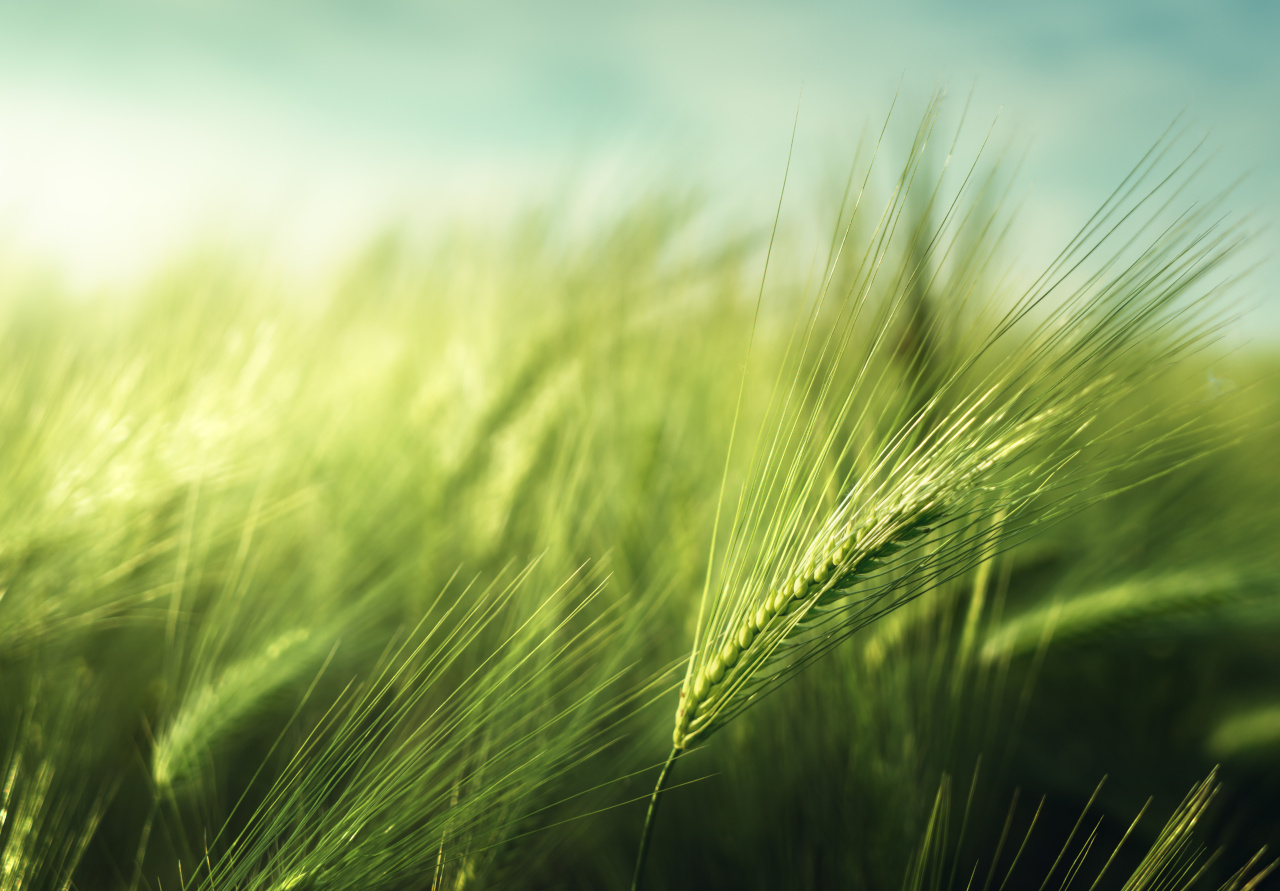
In recent years, German researchers have also been instrumental in sequencing and analysing the vast genomes of rye and bread wheat. The BMBF supported the genome projects within the framework of Plant 2030. Through the TERTIUS lighthouse project, the BMEL supports a consortium that intends to build on the genome data to breed high-yielding wheat varieties with a strong resistance to drought. Crop plants with deeper and more branched roots should be able to cope better with ever more frequent periods of drought during the spring and summer months.
Additional research approaches use state-of-the-art techniques to simulate various climate scenarios in the greenhouse in order to calculate their effects on growth and yield. This kind of work is being performed at the Helmholtz Centre for Environmental Research in Bad Lauchstädt, among other places. Another area of investigation is the connection between plant genes, the environment and the phenotype, which has an effect on the structure, function and efficient use of a plant’s resources.
Phenotyping is used to search and measure plants for complex external traits or characteristics without harming or destroying them. The BMBF has funded the establishment of the Deutsches Pflanzen Pänotypisierungsnetzwerk (German Plant Phenotyping Network, DPPN), which has set up modern high-throughput facilities for screening plants in Jülich, Munich and Gatersleben.
Sustainable, bio-based management has always been at the core of organic farming. One of the principles of the organic farming cycle is that a farm grows its own animal feed without easily soluble mineral fertilisers and chemical crop protection. To keep the soil fertile, organic farmers fertilise with manure or slurry, or they use legume crop rotation. While the total number of farms in Germany is declining, the number of organic farms is steadily growing. In 2020, there were around 35,400 organic farms in Germany, which is about 13.5% of all farms. A key challenge in organic farming is that the yields are lower than in conventional farming. Accordingly, there is great interest in new research findings on land use and soil fertility and other strategies to sustainably increase yields.
The potential of legumes for this purpose has not been exhausted by far. Thanks to root-nodule bacteria, legumes can fix nitrogen from the air, which fertilises the soil. What’s more, legumes are also valuable sources of protein. As part of its protein crop strategy, the BMEL is funding projects that are intended to give a new boost to the cultivation and breeding of protein-rich lupins, soya, peas and field beans in Germany. This also includes varied crop rotation and mixed cultivation. One BMEL project investigates the mixed cultivation of corn and runner beans. This boosts soil fertility, has a potentially positive effect on biodiversity and reduces soil erosion.
In the BMBF-funded IMPAC3 project, researchers from the University of Göttingen investigated different systems of mixed cultivation, for example the joint cultivation of winter wheat and winter fava beans. The results of the field trial are promising: The joint cultivation increased the nitrogen supply of the wheat by 40%, and the yield by more than 30% compared to a monoculture, while the need for fertiliser was reduced.
The BMBF programme Soil as a Sustainable Resource for the Bioeconomy – BonaRes consists of ten soil research associations that are also working on new concepts and strategies for sustainable soil management (see Circular bioproduction). The objective is not just to boost soil fertility, but also to increase the carbon storage capacity of the soil (carbon sink). In addition to new crop rotations – such as the cultivation of catch crops like clover, charlock or phacelia, a bee crop plant, the BonaRes teams are investigating how the community of microorganisms in the soil, the microbiome, can be improved. The interactions of plant roots and their direct environment in the soil are the focus of another BMBF funding initiative.
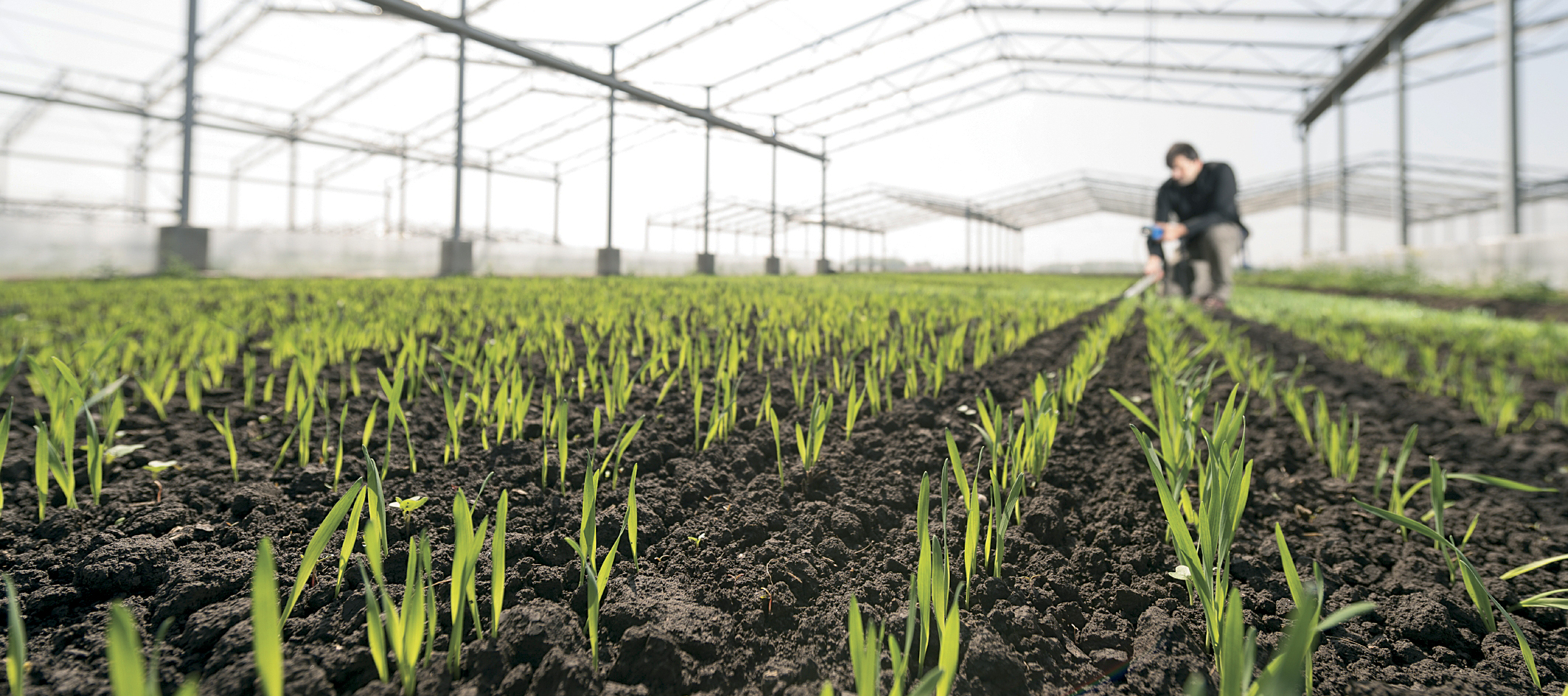
The immense technological progress made in the last few decades has enabled farming to move towards sustainable and resource-efficient agricultural management. Digitalisation also has an important role to play in this: Much of the information on soil, land use and the climate is now publicly available in digital form. In addition, the amount of data from aerial photographs taken by drones or earth observation satellites is increasing. More and more tractors and other agricultural machinery are being equipped with sensors and measuring technology that can record the condition of the soil or the plants. This enables agricultural machines to analyse the water and nutrient requirements of the crops. Powerful computer applications using artificial intelligence (AI) help to evaluate the huge amounts of data. Plants can be watered, fertilised or cleared of weeds as needed and with precise accuracy based on satellite and weather data. This not only increases efficiency and yield, but also reduces the input of excess nutrients into the environment and lowers the costs for fertilisers, pesticides and seeds.
The use of small, autonomous and GPS-controlled field or harvesting robots or drones could counteract the problem of soil compaction. Digitalisation is paving the way towards a precision agriculture that is resource-efficient and environmentally friendly. It also allows smaller-scale and even pinpoint farming of arable land. Digital assistants also support animal husbandry: Sensor and measurement technology monitors animal activity, needs-based feeding, milking and the animals’ health. Digital technologies have great potential to make crop cultivation more sustainable and ensure animal welfare. The BMBF’s funding programme for Agricultural Systems of the Future puts a focus on agriculture 4.0 with smart machine and system networks using AI and other IT applications. To promote digitalisation in agriculture, the BMEL funds digital trial fields and has initiated the funding priority HortiCo4.0.
In forestry, digitalisation has not yet made as much progress as it has in agriculture. While the large private and public forest owners and the timber industry have already digitalised some of their business processes – albeit mainly with individual solutions – small private forests and smaller companies are more reluctant and have much catching up to do. Digital networking along the entire forest and timber value chain is still a long way off. The German Federal Government’s funding policy has been promoting solutions, though.
In an online survey published in 2022 by the German Forestry Council and the Timber Working Group on digitalisation in the German and Austrian forestry and timber industries, 94% of the 256 companies surveyed said they were interested in learning more about digitalisation. However, 65% of respondents are currently not actually prepared to implement digital projects in the Forestry & Wood Cluster.
According to the survey, the biggest obstacle to implementation is the lack of standardised business processes, in particular compatible data interfaces. Insufficient connectivity in the forest and a lack of broadband internet connections in rural areas present additional hurdles, along with concerns about data protection and IT security.
However, digitalisation in the Forestry & Wood Cluster offers indispensable options for more efficient wood production and processing. Numerous initiatives and projects have emerged nationwide to advance the issue.
Through the Agency of Renewable Resources (FNR), the BMEL alone is currently funding 15 research networks covering more than 40 individual projects concerned with digitalisation along the forestry and wood value chain. The Smart Forestry research initiative, for example, is developing a cross-cluster process for intelligent and fully integrated timber harvesting. The value creation networks based on the Forest and Wood 4.0 principles connect all players and systems involved in timber harvesting via digital twins on the Internet of Things.
The Contura project combines research and practice in order to develop a digital recording system for the condition of forest roads. This system is based on an artificial neural network which stores information about the condition of a forest road whilst it is being driven on. Data collected in this way is used to create a digital twin of the road while a snapshot of the actual road is digitally stored. Once the condition of the forest road has been recorded and evaluated, the digital twin serves as a basis for planning road maintenance – a prerequisite for forest work and timber harvesting.
Adapting timber production to climate change
Forests provide a large part of renewable materials used in Germany: wood. Forest trees lock carbon from CO2 into their biomass, which is a significant contribution to climate action. As with agriculture, the major challenge lies in securing a sustainable supply of raw materials and adapting to climate change. Particularly between 2018 and 2020, calamities caused by droughts and storms caused extensive damage in German forests, and the bark beetle has spread extensively.
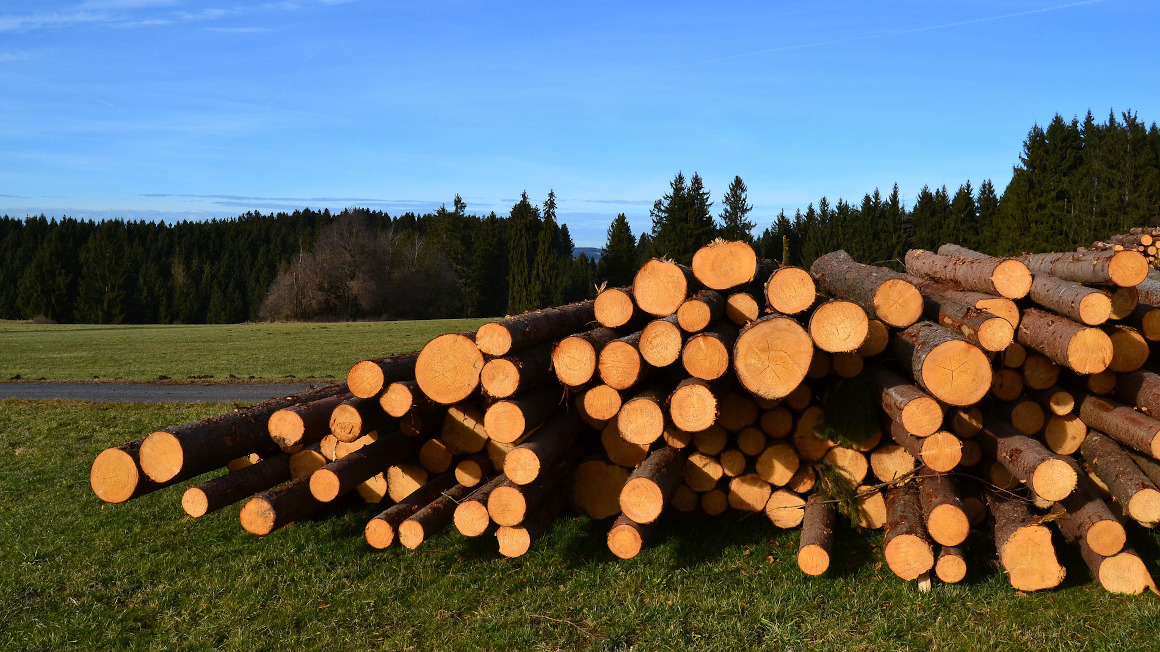
In addition to converting forests into climate-resilient mixed forests with tree species that are suitable for the habitat, forest plant breeding can help secure the supply of high-quality reproductive material. Breeding trees is particularly complex and time consuming. This is why the Federal Government and the Federal States have joined forces to create a breeding strategy designed to make six tree species (Douglas fir, larch, sycamore maple, spruce, pine, oak) fit for the future.
In addition, in 2021, the Federal-Länder Working Group Forest Genetic Resources and Forest Seed Law (BLAG-FGR) published a national concept for identifying tree species relevant for adapting to climate change with a view to establishing comparative cultivation projects. The German Federal Government’s aim is to strike a sustainable balance between the increasing – and sometimes competing – burdens on the forest and its sustainable performance. The BMEL’s Charter for Wood 2.0 addresses this issue (see chapter The resources of the bioeconomy). In addition, the Forest Strategy 2050 builds on this guiding principle by formulating policies for sustainable forest development.
Short rotation coppice, in which fast-growing trees such as poplars ad willows are cultivated, can be a meaningful addition to agricultural operations. These permanent crops can be harvested after just a few years. The BMEL has funded various plant breeding projects for the development of tree species suitable for commercial cultivation in short rotation coppice. Agroforestry combines woody plants such as trees or shrubs with arable crops and animal husbandry on the same land. The various components are intended to create ecological and economic benefits. Agroforestry can also be a strategy to remove more CO2 from the atmosphere and contribute to climate action. The BMEL and the BMBF are funding several research projects on agroforestry.
Closed production systems
n recent years, new technologies have produced a growing number of mature, closed production systems. Highly controlled production conditions allow fruit and vegetable cultivation as well as animal husbandry all year round. Indoor farms are space-saving production systems with largely closed material and energy flows and coupled cycles. Moving food production into enclosed, heated and artificially lit spaces enables large-scale agricultural production in any location or climate.
With funding from the BMBF, the Leibniz Institute of Freshwater Ecology and Inland Fisheries (IGB) has developed an emission-free aquaponics system that allows cichlids and tomatoes to thrive together. CUBES Circle, an Agricultural Systems of the Future project, has developed a closed food production system consisting of connected, mutually communicating and standardised production units with largely closed energy and nutrient fluxes for the cultivation of fish, plants or insects. Other innovative concepts focus on integrating the cultivation of plants into urban areas, such as roofs or facades.
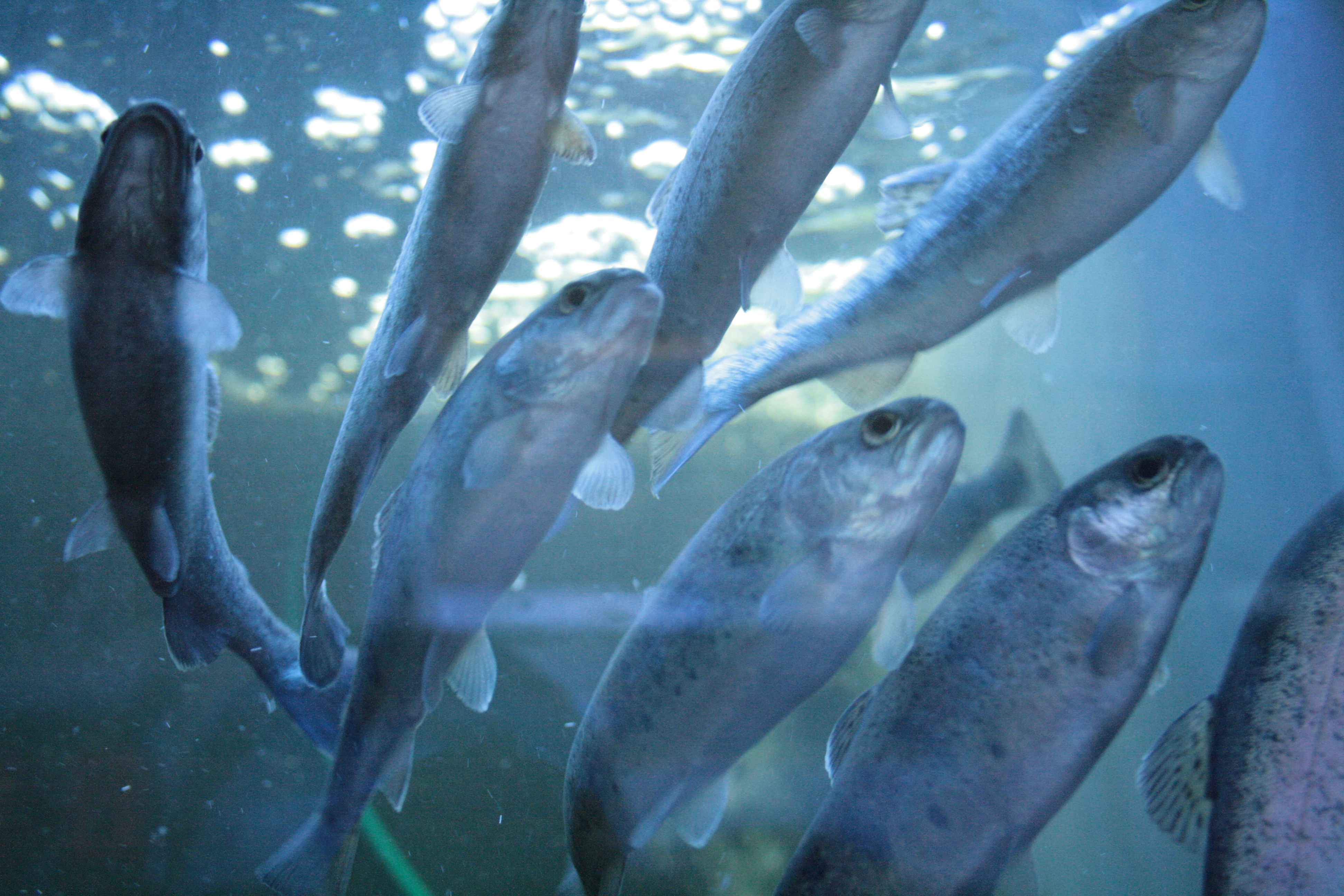
More and more stakeholders are turning to urban farming to meet the demand for regional products and to make immediate use of residual and waste materials or waste heat generated on site. SUSKULT, coordinated by the Fraunhofer Institute for Environmental, Safety and Energy Technology (UMSICHT), is one such project which converts sewage treatment plants into suppliers of nutrients for vegetable cultivation in hydroponic systems. This agricultural system of the future investigates the cultivation of lettuce, duckweed and sweet potatoes, amongst others. Indoor farming also plays an important role in the Innovation Area “NewFoodSystems” (see Food industry).
